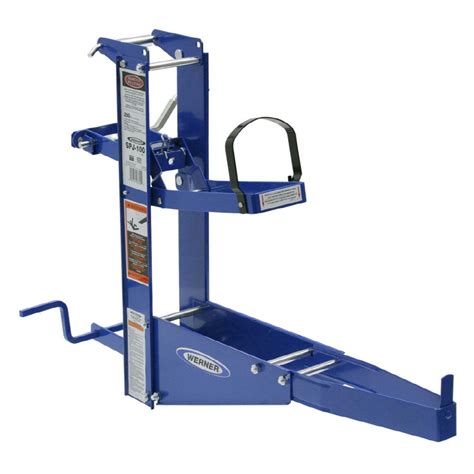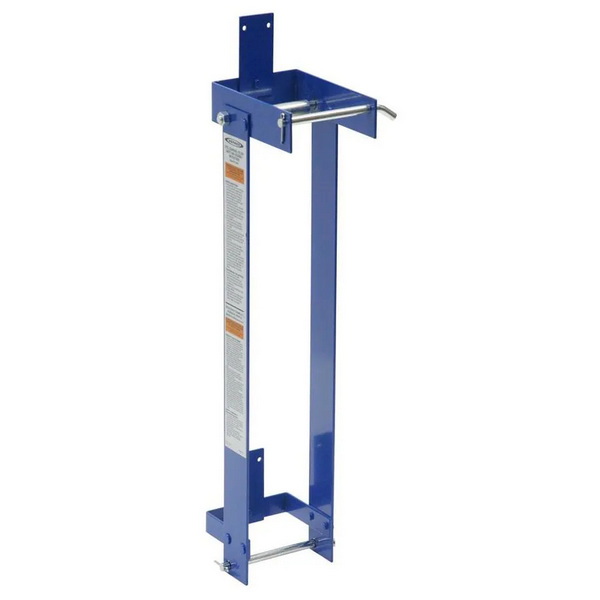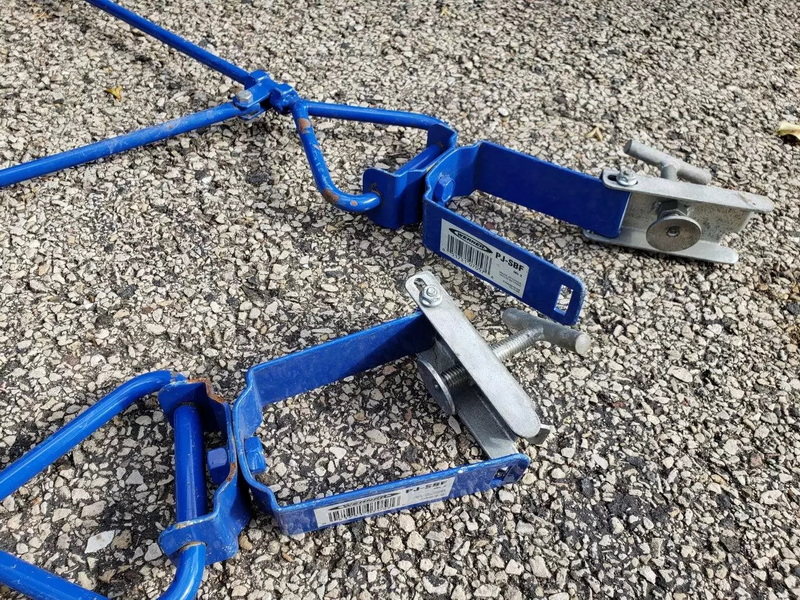Content Menu
● Understanding the Werner Pump Jack Scaffolding System
● Step-by-Step Guide to Setting Up the Werner Pump Jack Scaffolding System
>> 1. Gathering Equipment and Inspecting Components
>> 2. Securing the Poles
>> 3. Attaching the Pump Jack Brackets
>> 4. Installing Support Braces
>> 5. Installing the Work Platform
>> 6. Adding Safety Features
>> 7. Testing the System
● Factors Contributing to Ease of Setup
● Potential Challenges and Solutions
● Safety Considerations
● Alternatives to the Werner Pump Jack Scaffolding System
● Conclusion
● FAQ
>> 1. How long does it typically take to set up a Werner pump jack scaffolding system?
>> 2. Can the Werner pump jack scaffolding system be used on all types of terrain?
>> 3. What is the maximum weight capacity of the Werner pump jack scaffolding system?
>> 4. Is special training required to set up and use the Werner pump jack scaffolding system?
>> 5. Where can I find detailed instructions and safety guidelines for the Werner pump jack scaffolding system?
● Citations:
For residential construction and renovation projects, the efficiency and safety of setting up scaffolding are paramount. The Werner pump jack scaffolding system is often lauded for its relative ease of setup compared to traditional scaffolding options. This article explores just how easy it is to erect a Werner pump jack scaffolding system, detailing the step-by-step process, highlighting key features that contribute to its user-friendliness, and addressing potential challenges.

Understanding the Werner Pump Jack Scaffolding System
The Werner pump jack scaffolding system is a supported scaffolding system that utilizes a pump jack mechanism to raise and lower a work platform along vertical poles. This system is particularly well-suited for tasks such as siding installation, painting, window replacement, and other light to medium-duty residential construction tasks[1].
Step-by-Step Guide to Setting Up the Werner Pump Jack Scaffolding System
The setup process can be broken down into manageable steps:
1. Gathering Equipment and Inspecting Components
-Equipment Checklist: Ensure you have all necessary components, including pump jacks, aluminum poles, work platforms (planks), brace supports, safety gear (harness, guardrails, fall protection), and any required tools[1].
-Inspection: Inspect all components for damage or defects before use. Aluminum poles should be free of dents or damage[1].
All steel parts have a powder-coated finish for use in all types of weather preventing rust and corrosion[2].
2. Securing the Poles
-Positioning: Position the poles at the correct distance apart based on your project needs and the length of the platform[1].
-Ground Preparation: Erect Pump Jack system on firm ground[5]. When working on soil, plywood should be used to form a solid plate under the Werner pole foot[5].
-Attachment: Install pole foot into the bottom of the pole. Ensure button locks are securely snapped into holes on pole[5].
-Using a Support System: Secure the support system with the screws[5].
3. Attaching the Pump Jack Brackets
-Sliding: Slide the pump jack brackets onto the poles[1].
-Engagement: Ensure they are properly engaged and functioning smoothly before proceeding[1]. The rubber pad of the pole is facing the back of the pump jack where the roller and brake can make contact[9].
4. Installing Support Braces
-Attach support braces to roof of structure to be worked on using at least four screws with a minimum holding strength equivalent to 1/4" x 3" type AB screws[5].
-The braces feature a full swivel head to cover most roof pitches[9].
5. Installing the Work Platform
-Placement: Place the scaffolding planks between the brackets, ensuring they are level and secure[1].
-Overlap: If using multiple planks, overlap them according to OSHA requirements[1]. Make sure the platform is no more than 14 inches from the wall[3].
-Security The steel parts should be secured and have a powder-coated finish[2].
6. Adding Safety Features
-Guardrails and Toeboards: Attach guardrails and toeboards for additional safety[1]. Werner offers end guard rail and safety net combinations to help keep workers within safe working boundaries and meet OSHA requirements[2].
-Nestable Stages: New nestable stages are 2 person 500 lbs. rated and provide a continuous work platform reducing trip hazards[2].
7. Testing the System
-Operation: Slowly raise and lower the platform to ensure the jacks operate smoothly[1].
-Stability: Check for any instability or shifting and adjust accordingly[1].
-Fasteners: Make sure all fasteners, braces, and connections are secure before starting work[1].

Factors Contributing to Ease of Setup
Several factors contribute to the ease of setting up the Werner pump jack scaffolding system:
-Lightweight Components: The aluminum construction makes the components easier to handle and maneuver[2].
-Modular Design: The system's modular design simplifies the assembly process[1].
-Clear Instructions: Werner provides detailed instructions and diagrams to guide users through the setup process[5].
-Quick-Connect Mechanisms: Quick-connect mechanisms facilitate the rapid attachment and detachment of components.
Potential Challenges and Solutions
While the Werner pump jack scaffolding system is generally easy to set up, some challenges may arise:
-Uneven Ground: Use base plates or shims to level the system on uneven ground[1].
-Limited Space: In confined spaces, carefully plan the setup to ensure adequate clearance for the poles and platform.
-High Winds: Avoid setting up or using the system in high winds. If necessary, use additional bracing to secure the scaffold[1].
-Lack of Training: Ensure all workers have received proper training on the safe erection and use of the system[1].
Safety Considerations
Despite its ease of setup, safety should always be the top priority.
-OSHA Compliance: Werner provides end guard rail and safety net combinations to help keep workers within safe working boundaries and meet OSHA requirements[2]. If you are working 10 feet or higher from a scaffold, OSHA requires vertical fall protection[2].
-Fall Protection: Always use proper fall protection measures, such as safety harnesses and lanyards[1].
Alternatives to the Werner Pump Jack Scaffolding System
While the Werner pump jack scaffolding system is a popular choice for residential construction, it is essential to consider alternative options to determine the best fit for a specific project. These alternatives include:
-Frame Scaffolding: Frame scaffolding, also known as fabricated scaffolding, is an alternative to the Werner system because it is economical, easy to set up and tear down, and the most versatile.
-Ladder Jacks:Werner Aluminum Ladder Jacks are an alternative and come in different styles[6].
Conclusion
The Werner pump jack scaffolding system offers a compelling blend of ease of setup, portability, and versatility, making it an excellent choice for residential construction projects. However, like any scaffolding system, proper planning, adherence to safety guidelines, and qualified personnel are crucial for ensuring a safe and productive working environment. By understanding the setup process, addressing potential challenges, and prioritizing safety, contractors can confidently utilize the Werner pump jack scaffolding system to enhance their efficiency and achieve successful project outcomes.

FAQ
1. How long does it typically take to set up a Werner pump jack scaffolding system?
The setup time depends on the size of the system and the experience of the crew, but it generally takes between 1 and 3 hours.
2. Can the Werner pump jack scaffolding system be used on all types of terrain?
The system is best suited for relatively level surfaces. Uneven ground may require the use of base plates or shims for leveling[1].
3. What is the maximum weight capacity of the Werner pump jack scaffolding system?
The weight capacity varies depending on the specific model and configuration. Always consult the manufacturer's specifications before loading the system[2]. New nestable stages are 2 person 500 lbs. rated[2].
4. Is special training required to set up and use the Werner pump jack scaffolding system?
Yes, proper training is essential for ensuring the safe erection and use of the system[1].
5. Where can I find detailed instructions and safety guidelines for the Werner pump jack scaffolding system?
Detailed instructions and safety guidelines are available from Werner's website and authorized distributors[5].
Citations:
[1] https://scaffoldingrentalandsales.com/blog/-how-to-properly-set-up-and-dismantle-a-pump-jack-system/
[2] https://www.industrialproducts.com/48w-x-24h-werner-aluminum-pump-jack-scaffolding-system.html
[3] https://www.youtube.com/watch?v=b4JTSY5e7zk
[4] https://industrialladder.com/pump-jacks-powerpole-systems/werner-aluminum-pump-jacks/
[5] https://pdf.lowes.com/productdocuments/678382fc-ebff-4210-9467-33700c3f5bb9/61751388.pdf
[6] https://www.nationalladder.com/Brands_1/Werner/Werner-Pump-Jacks/Werner-Aluminum-Pump-Jack-System/Werner-National-Ladder-Package-Assemblies/Werner-NLPJS-242-Kit
[7] https://falconladder.com/content/PUMPJACK/Pump-Jack-System-Instructions.pdf
[8] https://www.wernerco.com/ca/products/specialty-products/pump-jacks
[9] https://www.youtube.com/watch?v=BUAO-ZQYZ_k






















